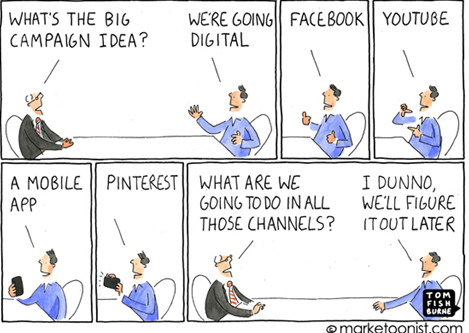 The value of a company, brand or product’s reputation in the socially connected marketplace has started to eclipse the value of their paid advertisement and marketing efforts. If you need proof that the previous statement is true, please explore the bibliography list at the bottom. In this post I would like to explore the state of the reputation ecosystem and hierarchy of its content from the perspective of the customers and the businesses involved.
The value of a company, brand or product’s reputation in the socially connected marketplace has started to eclipse the value of their paid advertisement and marketing efforts. If you need proof that the previous statement is true, please explore the bibliography list at the bottom. In this post I would like to explore the state of the reputation ecosystem and hierarchy of its content from the perspective of the customers and the businesses involved.
The contemporary wisdom of social media marketing and customer support pundits, suggests that companies have to monitor any channel their customers are using at all times. In practical terms such an approach may result in ineffective use of monetary and talent resources. The extensive and growing selection of channels available to customers makes it improbable to monitor and mine content for producing meaningful action. The same dilemma faces customers and businesses alike:
Which social media channel is the best to publish my customer experience to make a desirable impact?
Which social media channel is most likely to serve trustworthy content, to help me make the best purchase choice?
Which social media channel(s) are most likely to yield the most valuable insights at a reasonable cost?
If your idea of reputation management is chasing every negative mention of your brand anywhere on the Internet and trying to erase or neutralize it, you will spend a lot of time and money playing this “whack-a-mole” game without any financial gain. Your brand/reputation, is what your customers say about their experience doing business with your company. The best you can do is learn from what they say publically to improve their personal experience every step of their journey. In the age of social customers, manipulation and puffery do not work as well as they used to, yet authenticity and competence became the currency of choice.
From that perspective different social media channels, where customers can share their experiences, offer very different value for both consumers and the brands based on these criteria:
- Is there a sufficient volume of customer feedback on this channel? A small number of a product/brand customers, who share their experience on a given channel, makes this channel superfluous for assessing this product/brand reputation. It also makes it improbable for the brand to learn how to improve customers’ experience cross market.
- What is the business model behind the social media channel? Who pays for the channel to be in existence, and what is the primary reason for this channel’s existence? Based on the answers you can expect certain biases to influence the content published in the specific social media channels, regardless of their assurances. Facebook’s brand/product page is paid for by the brand to advertise its products, therefore the probability of finding negative customer comments published there is relatively low. The Amazon reviews site is published (paid for) by retailers to increase page visit to the purchase conversion ratio – not of the specific product page, but of any product page available on the Amazon website. Therefore the authenticity of content on a site like Amazon is more trustworthy than on a site like Facebook. The trustworthiness of many social media channels, like Yelp, Trustpilot, TravelAdvisor and others, has been challenged by both consumers and companies in the past. No allegations were actually proven, but their business model’s dependence on brand’s support/advertising leads to the suspicions of conflict of interest.
- What is the desired outcome? An enthusiastic Twitter message from somebody you barely know is not likely to help in selecting your next washing machine purchase. A reasonable number of BestBuy.com customer reviews, describing their experience in reasonable detail, may well assure you that this machine would treat your laundry they way you would expect it. It is not about positive and negative sentiments, it is about the relevance of published opinions to the desired outcome of the reader. The detailed description of an experience with a specific product helps consumers understand how the customers’ experience relates to their own expectations. From the perspective of a brand/product manager, the analysis of a Twitter stream can provide the knowledge that your customers in the West region love your brand, but the customers in South hate it, but it is not likely to help you measurably improve your brand reputation.
Every day and every technology bring new choices. The wise choices are the result of careful consideration of desired outcomes and prudent analysis of potential for unintended consequences.
Bibliography
- Absolute Value: What Really Influences Customers in the Age of (Nearly) Perfect Information
- http://www.eweek.com/small-business/social-media-seo-investment-rises-as-paid-advertising-falls.html
- http://blogs.sap.com/innovation/sales-marketing/loyalty-or-reputation-which-sells-your-product-better-01248327
- http://customerthink.com/customer-experience-is-more-important-than-advertising-infographic/
- http://www.mckinsey.com/insights/marketing_sales/a_new_way_to_measure_word-of-mouth_marketing
This article was syndicated from Business 2 Community: Not All Social Media Channels Are Created Equal
More Digital & Social articles from Business 2 Community:




